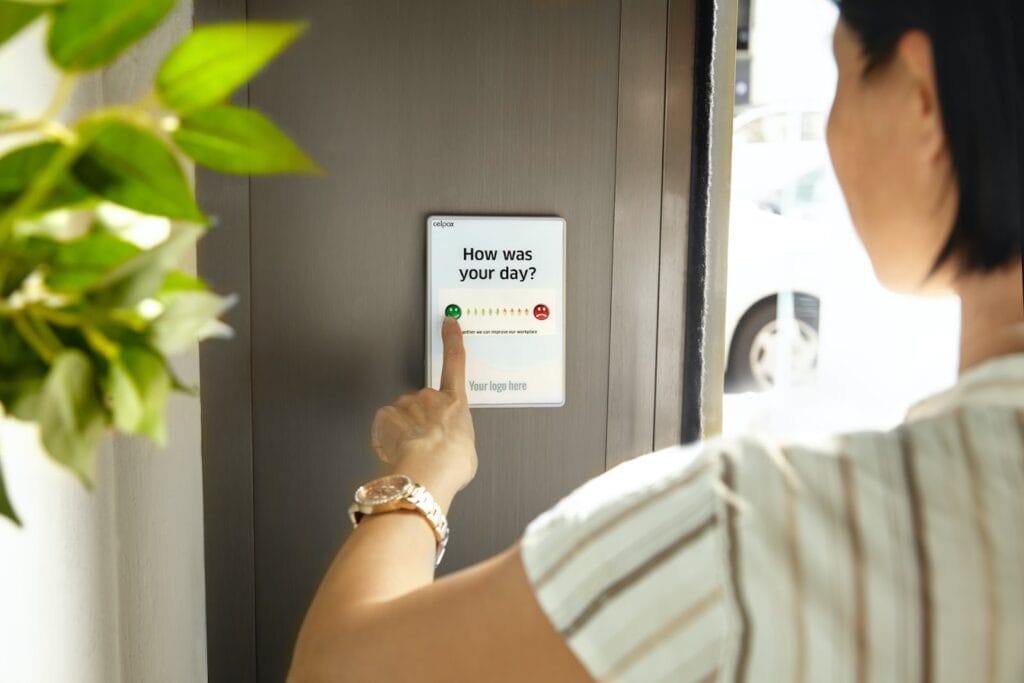Let’s be honest—collecting client information is not what gets you up in the morning.
But it’s still a critical business process and it needs to be done properly. The good thing is that you can replace all those time-consuming phone calls, back and forth emails, and interviews with questionnaires.
A questionnaire is a shortcut to understanding your clients. Not only does it help you assess clients but also makes it possible to anticipate their future needs. This one is huge because 70% of people expect companies to understand their unique needs and expectations.
In this post, you’ll learn:
- Questionnaire definition
- How to create a questionnaire
- The best questionnaire examples and templates
Need a questionnaire? Use one of our templates
Content Snare helps you create amazing questionnaires. Sign up to access our built-in questionnaire templates.
What is a questionnaire?

A questionnaire is a research tool for collecting feedback and measuring clients’ opinions, preferences, and behaviors. It usually consists of multiple-choice survey questions, but we’ll discuss the alternatives later.
A well-crafted questionnaire enables B2B companies to gain deeper insights into the client’s preferences, often leading to small but invaluable improvements. It also helps companies collect business-related data in many areas, including financial planning, marketing, and event planning.
On the other hand, B2C companies use questionnaires for collecting customer feedback from a large number of respondents in a short amount of time. The benefits of questionnaires include:
- Quantifying opinions and experiences
- Ensuring data accuracy
- Reaching survey respondents quickly
- Improving the existing services
- Learning about missing products or services
| Survey vs. QuestionnaireA survey is a much broader concept than a questionnaire. It includes different actions like determining the target audience, choosing answer categories, making a questionnaire, and interpreting data. The questionnaire is the tool for conducting surveys. We often use these two words interchangeably, but it’s good to know the difference. |
How to create a questionnaire: 5 steps

Questionnaires can tell you a lot about the client, provided you design them well and ask the right questions. Here are five steps to making an effective questionnaire.
Step 1: Identify the goal
Before you start writing questions, it’s important to understand the aim of your survey. What type of data is needed and why? The point is to focus on a single subject. If you want to screen renters with a tenant questionnaire, don't ask questions about vendors.
You should also choose the right type of questions. The two common types include:
- Multiple-choice questions: These allow you to scale responses so that you can quickly assess opinions. For example: How likely are you to recommend our services to colleagues? Such questions enable you to set a tangible rating scale.
- Open-ended questions: These provide more qualitative data and allow customers to tell their stories in their own words. For instance: Please describe the outcome you’d like to see to consider this project a success.
- Yes/no questions: They don’t allow for much nuance, but have their place. You can use them as conditions to hide questions that people don’t need to answer. For instance: Did you buy property this year? If the answer is ‘No’, you can hide your questions about property.
Besides that, remember that adding too many questions can lead to survey fatigue. Aim for up to 20 survey questions, but ask even fewer if that will do the trick. That helps respondents complete the entire survey and provide more accurate results.
Step 2: Keep the questions clear and concise
You will improve data quality by keeping the questions simple and straightforward. Avoid long sentences or asking for multiple explanations in a single answer.
Don't ask questions like this: “Does your company process health-related information and do you have a security policy in place?” Do this instead:
- Does your company process health-related information?
- Do you have a security policy in place?
Separate questions make it easier for respondents to concentrate and give the right answers.
Step 3: Use neutral phrasing
It’s also important to use neutral wording when writing survey questions. Avoid any language that could lead clients to answer in a certain way. That includes assumptions or judgmental statements about products, processes, or client relationships. Here’s an example:
- Don’t: How likely are you to recommend our top-rated and cutting-edge services to your colleagues?
- Do: How likely are you to recommend our services to your colleagues?
Step 4: Let it flow naturally
The order of your questions should be logical and flow smoothly, allowing respondents to quickly move through the questionnaire. Start with simple, easy-to-answer questions and then progress to more complex ones as they progress. Most companies can do it like this:
- Start with the basics about the client (demographic questions)
- Continue with multiple-choice questions
- Close the survey with open-ended questions
This questionnaire structure does two things—it collects the information you need while leaving extra room for respondents to express their thoughts or ideas.
Step 5: Stick to a simple questionnaire design
The last tip is to keep the questionnaire design neat and clean. It means not using too many:
- Colors
- Images
- Fonts
- Other excess elements
A simple design makes online surveys better because it eliminates distractions and helps clients focus on the essence. And remember—whitespace is your friend. It helps make a scannable and well-organized questionnaire.
Use questionnaire templates to collect customer feedback

You can create a survey from scratch, or you can use questionnaire templates to speed up the work. Templates are practically cheat codes that save hours on the questionnaire design process. You can use them in almost all businesses, and we’ll show you a few common use cases.
Template 1: Client discovery questionnaire
The sales cycle is long and fickle, but you can make it more predictable with a client discovery questionnaire. This template concentrates on four areas:
Basic questions
- What is your name/email address/phone number?
- What does your company do?
- How would you describe your company?
- Kindly describe your role in the organization.
Goals and problems
- What are your business goals?
- How soon do you want to achieve these goals?
- What is the main obstacle in reaching the goals?
- What do you think is causing these problems?
- What did you do to cope with these problems?
- What would you consider to be a successful solution with regard to this problem?
Budget
- What is your estimated budget for this project?
Closing questions
- What do you think will be the main issue during this project?
- Can we do something to help streamline the process?
- What results do you expect to see following the project’s completion?
- Do you have any other comments to share with us?
Template 2: Pre-coaching questionnaire
Sometimes you’ll use online surveys to evaluate the client before coaching. In this case, you can use the pre-coaching questionnaire template.
Basic questions
- What is your name?
- What is your address?
- What is your phone number?
- What is your email address?
Pre-coaching questions
- Why do you consider undertaking coaching sessions?
- Have you ever worked with a coach before?
- What do you expect to gain from these sessions?
- What type of learning do you prefer?
- Please describe yourself in five words
- What would you like to change in your life in the near future?
- How motivated are you to work on making those changes?
- Please provide a timeframe for the desired coaching sessions
- Do you have any other comments to share with us or questions to ask?
Template 3: Consulting questionnaire
Consultants are experts by definition, but they need to prove their expertise right away with a well-planned questionnaire. So, how to create a questionnaire as a consultant? Conduct surveys using these questions:
Basic company questions
- What is your company’s name?
- What is the address of your company?
- Please provide company phone number
- Please provide company email address
- VAT/GST number
- What is your company’s business scope?
Basic company representative questions
- What is your full name?
- What is your address?
- What is your phone number?
- What is your email address?
- Kindly describe your role in the organization
Consulting questions
- Why do you think you need consulting services?
- What are the key business priorities of your company?
- What is your advantage compared to your competitors?
- How would you quantify your company’s success?
- What do you think is the greatest hurdle your company should overcome?
- What is the cause of this problem?
- How prepared is your team to make the necessary changes?
- What do you hope we can do to help you solve the problem?
- Do you have any other comments to share with us?
These are only some of the more popular templates, but you can launch multiple surveys to gather data on different types of clients. Let’s breeze through other templates for developing questionnaires:
- Recruitment
- Home Insurance
- Real estate questionnaire for sellers
- Real estate questionnaire for buyers
- Graphic design
- Client onboarding
- Social media
- Branding
Streamline work with the right questionnaire builder
Collecting survey data is simpler if you use a questionnaire builder, but how do you know which one is best for you? We recommend looking for a platform with these features:
Well-designed templates
Search for a questionnaire builder that offers professional templates. It should also cover everything from website design and logo questionnaires to search engine optimization survey templates.
User-friendliness
The best questionnaire builders are user-friendly. It shouldn’t take you more than five minutes to figure out how to use the tool. If it takes more time, switch to a different tool.
Customization options
You can improve a questionnaire template through customization. Pick a tool that allows you to play with different styles or add branded elements to the survey.
Automation
Advances questionnaire builders are based on automation. That means all answers are saved automatically, helping respondents pick up where they left off. It also means the platform will send survey reminders based on your settings.
Send questionnaires with Content Snare
There are many questionnaire builders that will do a fine job creating a simple survey, but most of them have serious limitations. If you want an easy-to-use tool with advanced features, Content Snare is your best option.
It offers a range of readymade questionnaire templates, but you can also create requests from scratch. Create questionnaires in minutes, and Content Snare will do the rest:
- Notify clients about your questionnaire
- Auto-save answers
- Remind clients to respond
The days of back and forth emails are over. Use Content Snare to create questionnaires and collect client feedback.



